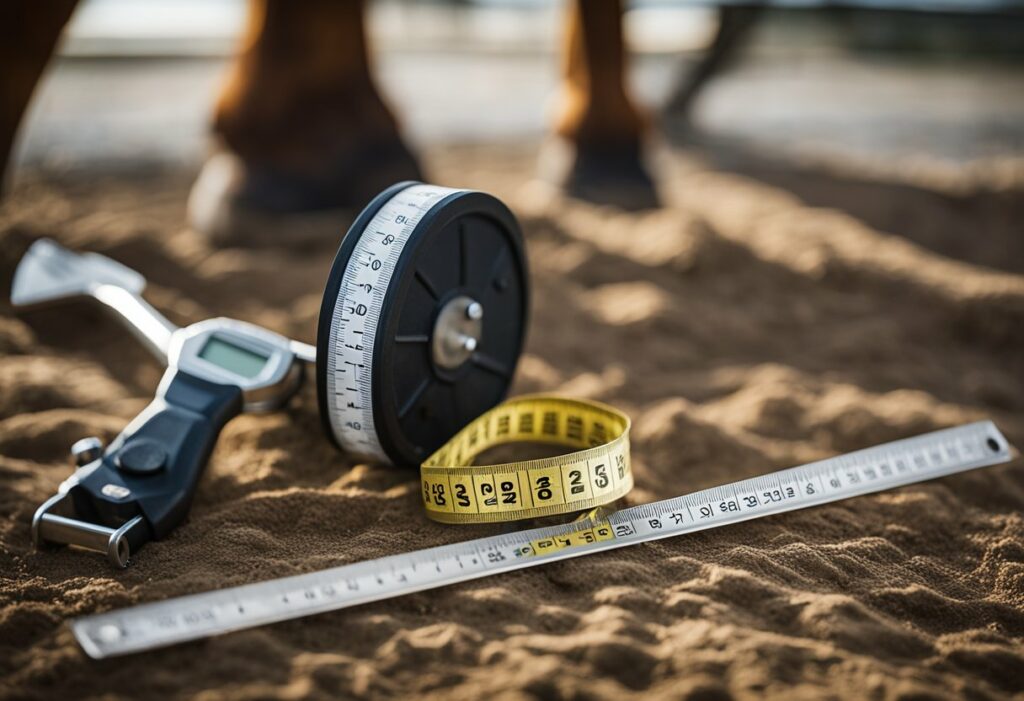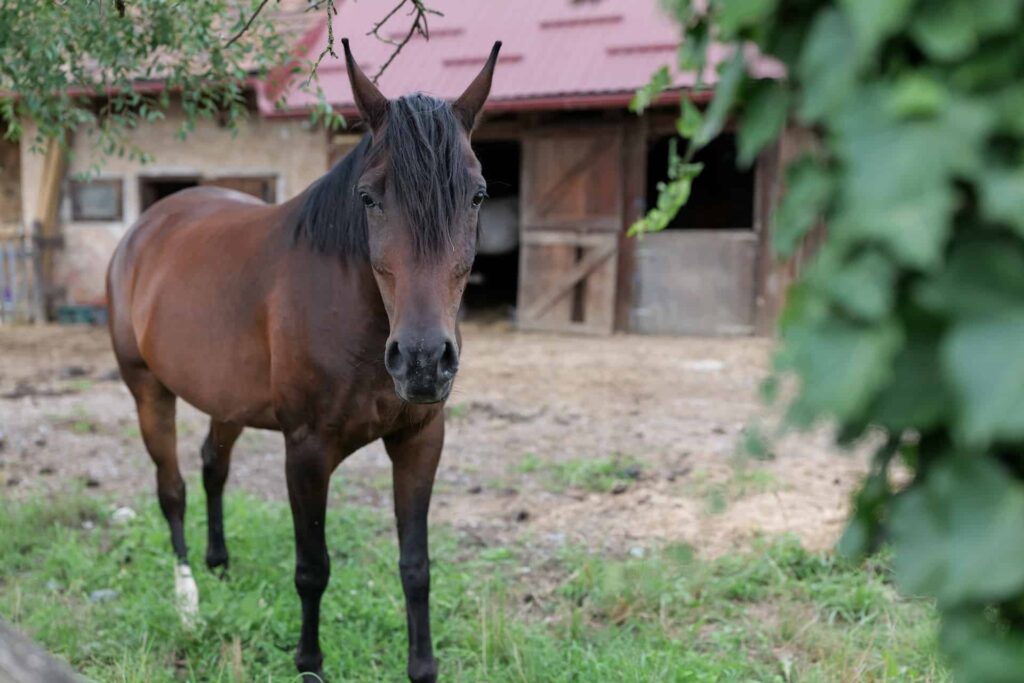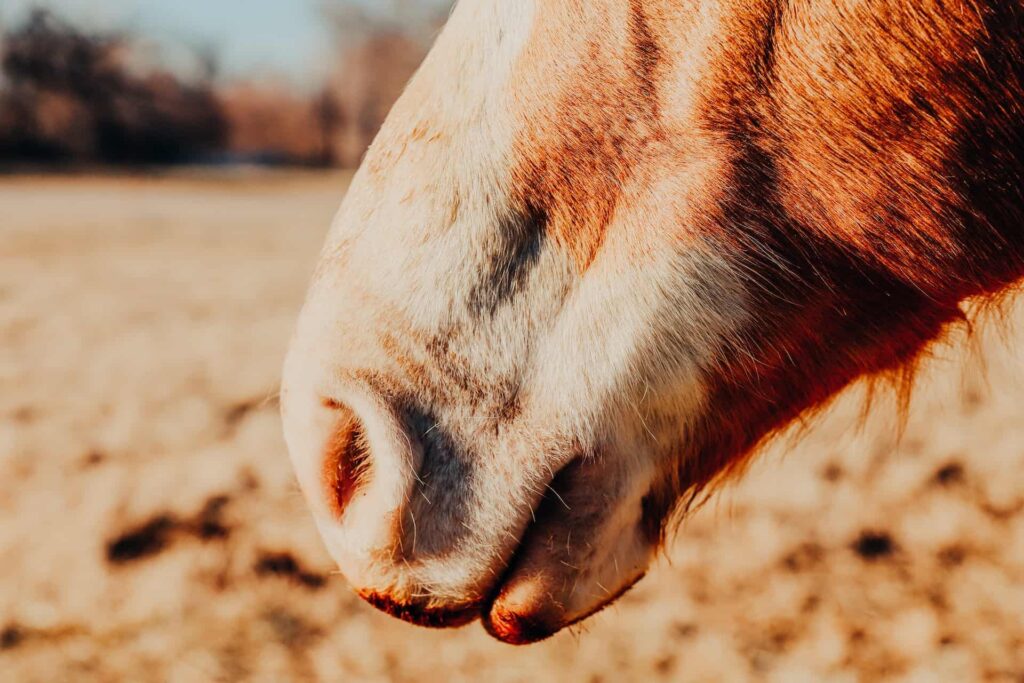Learning how are horses measured is a crucial aspect of equine care. It helps owners, trainers, and veterinarians provide for the well-being and proper development of these majestic animals. Knowing a horse’s height and weight aids in providing appropriate nutrition, assessing maturity, and selecting the right saddle or other equipment. Various tools and methods are used to obtain accurate measurements, which help in making informed decisions about a horse’s development, health, and performance.
To properly measure a horse, it’s important to understand the traditional units of equine measurement, namely hands and inches, as well as the contemporary use of centimeters. Measuring a horse’s height involves a standardized process that should be followed consistently to yield accurate results. Meanwhile, determining a horse’s weight requires special equipment or formulas based on the animal’s overall body dimensions. It is also important to consider the differences in size and growth patterns among various breeds of horses when interpreting measurements and anticipating growth potential.
Key Takeaways
- Accurate measurement of horses is important for providing proper care, nutrition, and equipment selection.
- Height and weight are the primary factors considered, with standardized methods and units applied.
- Breed differences and growth patterns play a significant role in interpreting measurements and predicting a horse’s final size.
Understanding Horse Measurement
Measuring a horse is a practice for various purposes, such as determining its size and assessing its health. The primary focus when measuring a horse is to establish its height, which is traditionally measured in hands. One hand is equivalent to four inches or about 10 centimeters.
To accurately measure a horse, make sure the horse is standing on a level surface. The measurement is taken from the ground to the highest point of the horse’s withers, which is the ridge between the shoulder blades. This point is chosen because it provides a stable and consistent reference for height assessment across various breeds and individual horses.
Using a measuring stick or tape, the horse’s height is recorded in hands and inches. For example, if a horse measures 60 inches, it is 15 hands tall (15 x 4 = 60). If the horse measures 62 inches, it would be recorded as 15 hands and 2 inches high (15.2 hh). It is common to use “hh” as an abbreviation for “hands high” when noting a horse’s height.
There are different categories of horses based on their height measurements:
- Pony: Usually measuring below 14.2 hands (58 inches or about 147 centimeters) high. Ponies are often ideal for young or inexperienced riders due to their smaller stature.
- Horse: Generally measures between 14.2 hands and 17 hands (58 to 68 inches or 147 to 173 centimeters) high. Horses come in a wide variety of breeds and are versatile, and suitable for various riding styles and disciplines.
- Draft Horse: Typically taller and more muscular than standard horses, draft horses can measure up to 18 hands (72 inches or 183 centimeters) and above. These horses are often used for heavy work, such as pulling plows and carts.
Understanding horse measurement is crucial for determining the proper size of riding equipment, assessing the suitability of specific horses for particular tasks or events, and gaining insights into their overall health and well-being. By mastering the measurement process involving withers, hands, and inches, horse owners, riders, and professionals can make well-informed decisions about their equine companions.
Tools for Measuring Horses
When it comes to measuring horses, there are a few dependable tools and methods that offer accurate results. This section will delve into two widely used techniques, namely the use of a measuring tape and the role of twine.
Use of Measuring Tape
A measuring tape is the perfect tool when it comes to determining a horse’s size. To accurately take measurements, the horse should be standing on a level surface with all four feet evenly placed. The most commonly measured part of the horse is the height, which is taken from the ground up to the highest point of the horse’s withers.
To measure the horse’s height, one end of the tape measure should be placed on the ground beside the horse, while the other end is extended upwards to reach the horse’s withers. The measuring tool should be held perpendicular to the ground for the most accurate results. The measurement can then be recorded in hands (1 hand = 4 inches) or centimeters.
It is important to be consistent and use the same measuring device throughout the entire process to obtain accurate and reliable results. Besides height, measuring tapes can also be used to determine the horse’s girth and body length for various purposes, such as fitting saddles or estimating weight.
The Role of Twine
While not as precise as a measuring tape, twine can still serve as a useful measuring tool in situations where a tape measure is not available. Twine can be used to approximate a horse’s height, girth, and body length by wrapping it around the area being measured and then comparing the length to a ruler or measuring tape.
To measure a horse’s height using twine, follow these steps:
- Stand the horse on a level surface with its feet evenly spaced.
- Hold one end of the twine on the ground and extend the other end up to the withers.
- Cut or mark the twine at the point corresponding to the horse’s withers.
- Measure the length of the twine using a ruler or measuring tape and record the measurement in hands or centimeters.
It is important to note that using twine as a measuring device may not yield the same accuracy as a tape measure. It can be a helpful alternative when no other options are available.
Measuring horses can be performed effectively using basic tools, such as a measuring tape or twine. These methods can help in determining height, girth, and body length, ultimately enabling better care and management of the horse.
The Process of Measuring a Horse’s Height
Measuring a horse’s height accurately helps determine the appropriate size of tack, evaluate the horse’s growth, or convey vital information to potential buyers. The standard unit for measuring horse height is hands, where 1 hand equals 4 inches (10 centimeters).
To begin the measuring process, place the horse on a flat surface, preferably in a barn or fenced area where it can stand still without distractions. The horse’s front hooves should be aligned, and its body should be in a square position with hooves evenly spaced apart.
A height measurement tool, commonly known as a horse measuring stick, is used to take accurate measurements. This instrument generally features a marked scale for height in hands and a horizontal sliding level that rests on top of the horse’s withers. The withers are the ridge between a horse’s shoulder blades, which is the standard reference point when measuring horse height.
Approach the horse from its left side, as this is the standard practice for handling and working with horses. Position the measuring stick perpendicular to the ground, close to the left shoulder, ensuring that the bottom tip touches the ground and the stick’s side aligns with the horse’s withers. Slide the horizontal level down until it gently rests on top of the withers, making sure not to apply too much pressure or tilt the stick, causing inaccuracies.
Once the horizontal level is set atop the withers, you can confidently read the horse’s height measurement from the calibrated scale on the measuring stick. The reading, given in hands, will provide an accurate representation of the horse’s stature as required for various practical purposes.
Measuring a horse’s height is a straightforward process when done with the appropriate tools, a well-positioned horse, and a focus on accuracy. This information contributes significantly to the effective management, care, and evaluation of horses in various equine-related activities and industries.
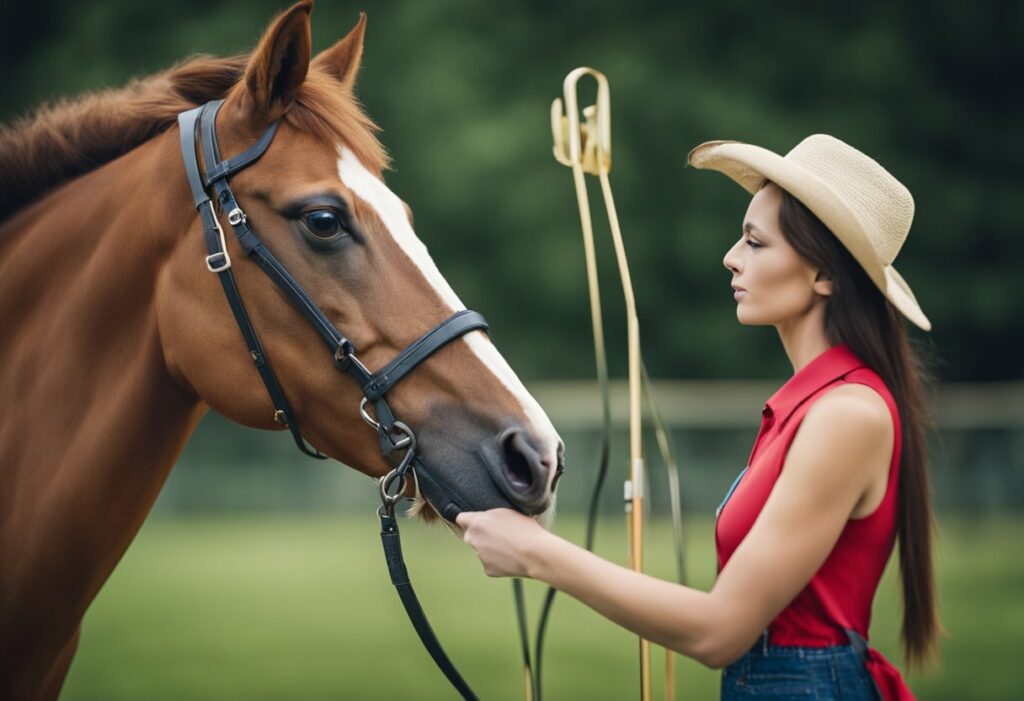
Interpreting Height Measurements
In equestrian sports, the height of a horse plays a crucial role in determining its suitability for specific disciplines and classes. It’s necessary to have a clear understanding of how to interpret height measurements when identifying appropriate horses for breeding, competition, or riding purposes.
Horse height is typically measured using the metric system, with the standard unit being centimeters (cm). The actual measurement process focuses on the distance from the ground to the withers – the highest point of a horse’s shoulder where the neck meets the back. Some countries still use hands, a non-decimal unit, as a traditional method of measuring horses. One hand is equal to 4 inches (10.16 cm).
When comparing horses’ height measurements, keep in mind the potential differences in the growth and development of each horse, which may lead to variations in their size. Age, breed, and individual genetics all contribute to differences in height. The heights of elite sport horses can slightly deviate from the average due to factors such as their conformation and specific purpose in a particular discipline. One such example can be found in a study of Swedish Warmblood horses.
It’s also important to consider the horse’s overall build and proportions when interpreting height measurements. A tall horse with a weak or poorly conformed structure may not perform as well as a slightly shorter horse with a robust and well-balanced physique. Remember that the ideal height for a specific discipline might vary based on factors such as rider size and the physical demands of the sport.
Keep in mind the differences between growth patterns in various breeds of horses. Some breeds may grow steadily and reach their full height earlier, while others might experience slower growth and mature later in life. Understanding these patterns can help in making informed decisions while evaluating and selecting horses based on their height measurements.
Interpreting height measurements in horses requires a thorough understanding and consideration of various factors, such as breed, age, and discipline. Utilizing the metric system provides a consistent and accurate way of comparing horse heights globally, allowing for horses to be selected and categorized appropriately based on their size and stature.
Weight Measurement in Horses
Accurate weight measurement of horses aids in feed management, medication dosing, and overall health assessment. There are several methods for estimating a horse’s weight, each with their advantages and disadvantages.
One popular method of weight estimation is through the use of a weight tape. A weight tape is specifically designed for horses and measures their girth around the barrel (the widest part of their midsection). Though convenient and inexpensive, weight tapes have been shown to underestimate horses’ weights by an average of 65.81 kg, making them less accurate than other methods.
An alternative method is the use of morphometric measurements, which involve taking various body measurements and applying them to a formula to calculate the horse’s weight. Measurements commonly used include wither height, girth circumference, and body length. A study on adult horses and ponies found success in estimating body weight using morphometric measurements, providing a more accurate alternative to weight tapes.
Electronic scales are considered the most accurate method of measuring a horse’s weight and are used in research studies and veterinary practices. These scales provide precise weight measurements without the need for calculations or estimations. They are expensive and not practical for everyday use by horse owners.
There are various methods for estimating the weight of horses, each with different levels of accuracy and practicality. Weight tapes are a popular choice for their ease of use but can be inaccurate. Morphometric measurements offer a more accurate alternative, while electronic scales provide the highest level of precision but are impractical for regular use. Accurate weight management in horses contributes to the overall well-being and health of these important livestock animals.
Measurement in Different Horse Breeds
When it comes to measuring horses, different breeds often require distinct approaches based on their unique characteristics. Draft horses and competitive horses, for example, each have specific measurement guidelines to accommodate their varying sizes and conformation. It is important to consider these differences when assessing horses for competitions, breeding, and other purposes.
Draft Horses Measurement
Draft horses, known for their strength and size, are typically used for heavy work tasks like plowing fields and pulling carts. Measuring draft horses focuses on assessing their size and conformation to ensure they are fit for their intended purpose.
- Height: Height is measured in a unit called “hands,” where 1 hand is equivalent to 4 inches. Draft horses generally stand between 16 to 19 hands tall, making them larger than most other horse breeds.
- Weight: These horses’ weight commonly ranges between 1,600 to 2,200 pounds. Their body condition score (BCS) should stay within a healthy range, as excess weight can lead to health complications.
- Conformation: Draft horse breeds should display a strong, solid build that is well-suited for work. Key attributes include a wide chest, strong hindquarters, and sturdy legs with good bone density.
Competitive Horse Measurement
Competitive horses, often used in various equestrian sports, are measured for attributes that focus on athletic prowess and well-balanced proportions. These horses must meet specific breed standards so they may perform optimally in their respective disciplines.
- Height: Competing horse breeds vary widely in height. For example, Thoroughbreds typically stand between 15 to 17 hands, while some sport horse breeds like Warmbloods can reach up to 18 hands.
- Weight: The ideal weight varies depending on the horse’s discipline and breed. For example, a Thoroughbred might weigh between 1,000 to 1,300 pounds, while a Warmblood can weigh from 1,100 to 1,600 pounds. Proper weight management is key to avoiding potential horse health issues and maintaining peak athletic performance.
- Conformation: For competitive horses, breed-specific conformation standards must be met to make sure every horse is structurally sound for the given discipline. These standards often focus on balanced proportions, a strong topline, well-sloped shoulders, and evenly distributed muscle mass.
Measuring horses should take into account the specific breed and purpose. Understanding the varied requirements for draft horses and competitive horses is crucial for accurate assessment and management of their health and performance.
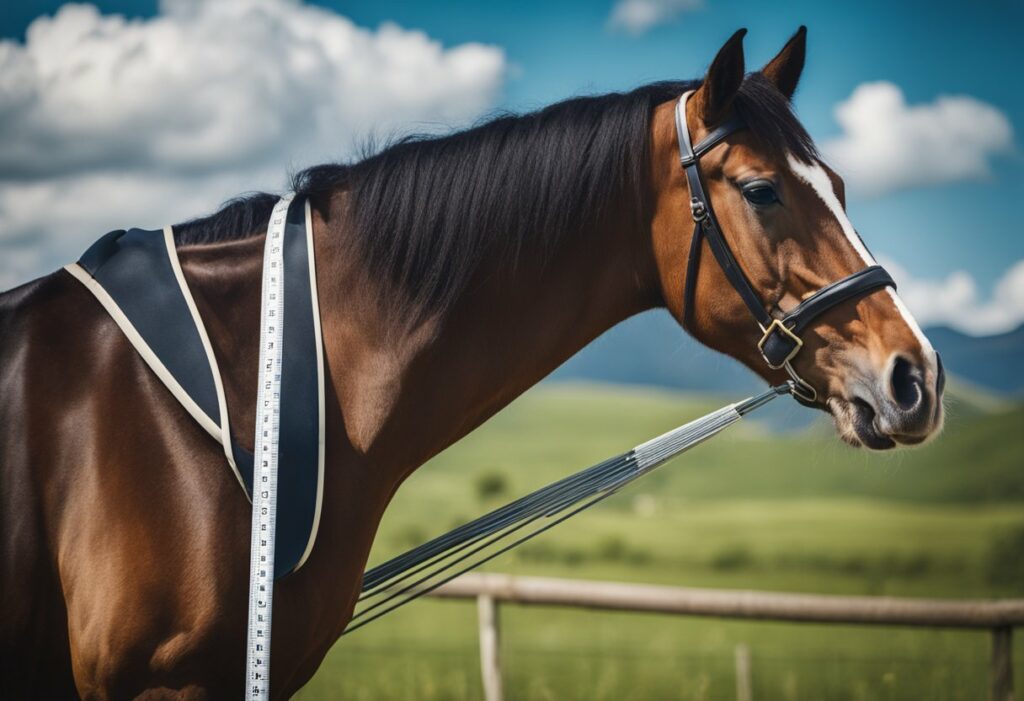
Height and the Final Growth of a Horse
Measuring the height of a horse is an important aspect of managing their growth and development. The height of a horse is usually measured from the ground up to the withers, which is the highest point of a horse’s back, located between its shoulder blades. This measurement is commonly taken in hands, where one hand equals four inches.
A horse will typically continue to grow until it reaches its final height, which can vary greatly depending on factors such as breed, genetics, and nutrition. A horse’s height at maturity can be estimated from their current height and age, though it’s important to remember that each horse is unique and may not follow a specific ‘rule.’ Meanwhile, some horses may reach their final height around three to four years of age, while others, particularly larger breeds, may continue to grow slowly until they are five or six years old.
To measure the height of a horse accurately, a couple of tools may be used, such as a measuring stick or tape. Proper handling and positioning of the horse will aid in obtaining an accurate measurement. Making sure the horse stands on level ground with its legs square and head in a neutral position can help. Using a lead rope can assist in maintaining the horse’s position and keeping it calm during the measurement process.
The final height and growth of a horse depend on various factors, so measuring their height accurately and regularly is important for monitoring their development. Using the correct tools and techniques, as well as ensuring the horse’s cooperation during the process, will contribute to an accurate and reliable measurement.
Frequently Asked Questions
What is the correct method to measure a horse’s height?
To measure a horse’s height accurately, the horse should be standing on a level surface with its head in a natural position. Measure the height from the ground to the highest point of the withers, which is the ridge between the shoulder blades.
What does ‘hands’ mean in horse measurements?
A ‘hand’ is a traditional unit of measurement specifically used for horses. One hand is equivalent to four inches. When expressing a horse’s height in hands, whole hands are placed before the decimal point, and the remaining inches are placed after the decimal point. For example, a horse that measures 14 hands and 2 inches would be written as 14.2 hands.
What is the average height of a horse?
The average height of a horse depends on its breed. Generally, horses can range in height from 14 to 18 hands (56-72 inches). Some smaller horse breeds, like the Connemara, typically measure around 14-15 hands, while larger breeds like the Shire can reach up to 18 hands or more.
How can I convert horse height from hands to feet?
To convert a horse’s height from hands to feet, multiply the number of hands by four to get the total number of inches. Then, divide this total by 12 to determine the height in feet. For instance, a horse measuring 15.2 hands would be 60 inches tall (15 x 4, plus 2), which equates to 5 feet, since 60 divided by 12 equals 5.
Is there a difference in measuring ponies and horses?
Measuring ponies and horses follows the same method. Ponies are generally smaller and have a height of 14.2 hands (58 inches) or less, while horses are taller than 14.2 hands. They’re distinguished mainly by their height, not the measurement process.
What tools are typically used to measure horses?
A common tool used for measuring horses is the horse measuring stick or a height measuring tape. These tools are designed specifically for measuring horses and can provide an accurate measurement when used correctly. Measuring sticks often come with a horizontal leveling bar for determining the height at the withers, while measuring tapes may have markers indicating hands and inches for easy reading.
Last Updated on November 13, 2023 by Nate Dewsbury
